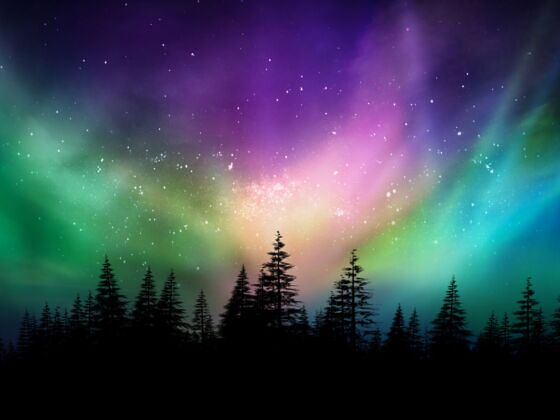A solar storm is hitting Earth this week and tonight, March 14th, it is expected to make the Northern Lights visible in the continental US. That’s right, the event that people travel thousands of mile to witness near the Arctic Circle each winter is giving US states such as Minnesota, Wisconsin, Michigan, North Dakota, Montana, and Maine a promo tour.


You Might Be Able to See Northern Lights in the Northern United States Tonight
A solar storm starts at what scientists call a “coronal hole,” or the dark patches on a sun with “open” magnetic field lines. This allows high-speed solar winds to spew into space, and these charged particles eventually come into contact with Earth’s atmosphere.
Those famous glowing streaks in the sky are the result of the particles skipping across our atmosphere.
While the Northern Lights, or Aurora Borealis, are usually restricted to parts of Alaska and northern Canada, a solar storm can amplify their effects, bringing the unearthly glow farther south than usual.
A G1 Watch is in effect for the 14 & 15 March, 2018 UTC-days. Enhancements in the solar wind due to the anticipated effects of a coronal hole high speed stream (CH HSS) are expected to cause the escalated geomagnetic responses. Visit https://t.co/dimAHi8BFd for the latest info. pic.twitter.com/doJIzMWaGe
— NOAA Space Weather (@NWSSWPC) March 12, 2018
The solar storm and its potential effects were reported by the Space Weather Prediction Center (SPWC), which is a branch of the National Oceanic and Atmospheric Administration. The SPWC also noted that the geomagnetic storm accompanying the solar storm could affect satellites and cause minor fluctuations in power grids.
However, the geomagnetic storm is classified G-1, or the lowest on the scale, so there is little cause for concern.
If you find yourself in the northern states of the continental US and want to increase your chances of seeing the Northern Lights tonight, it will help if you move away from local light pollution (e.g. street lamps) as well as any areas that are forecasted to have cloud cover.